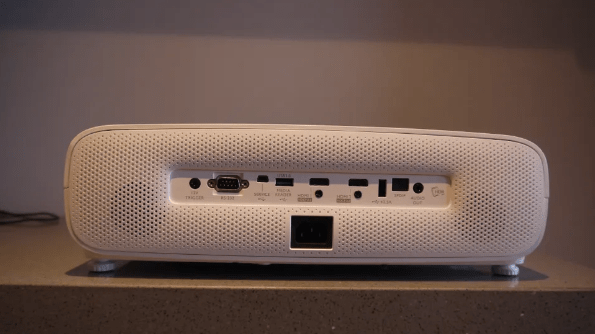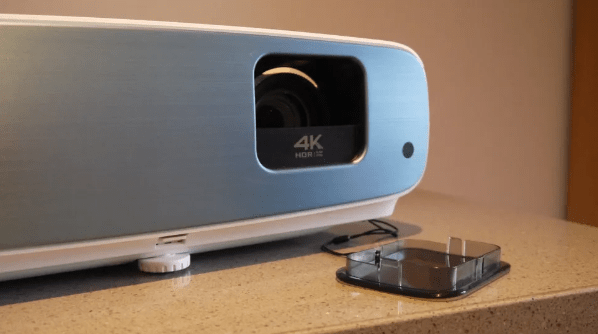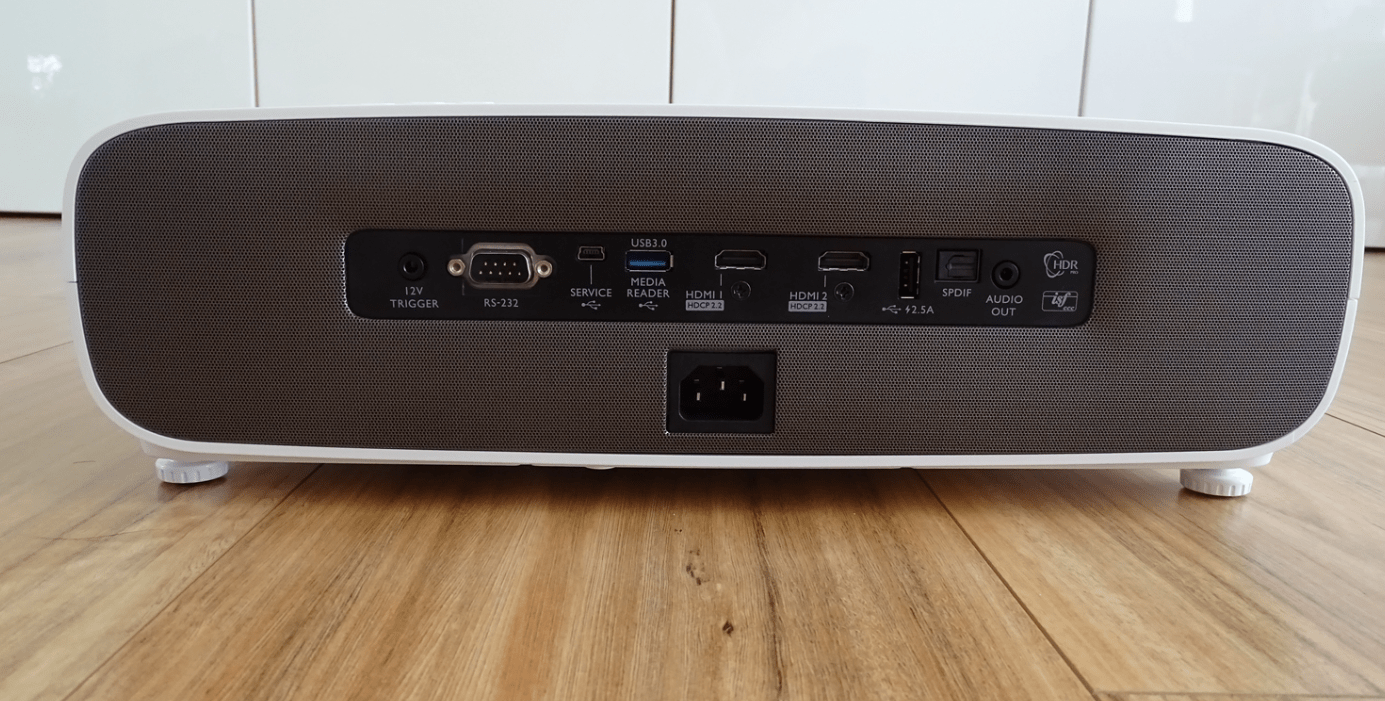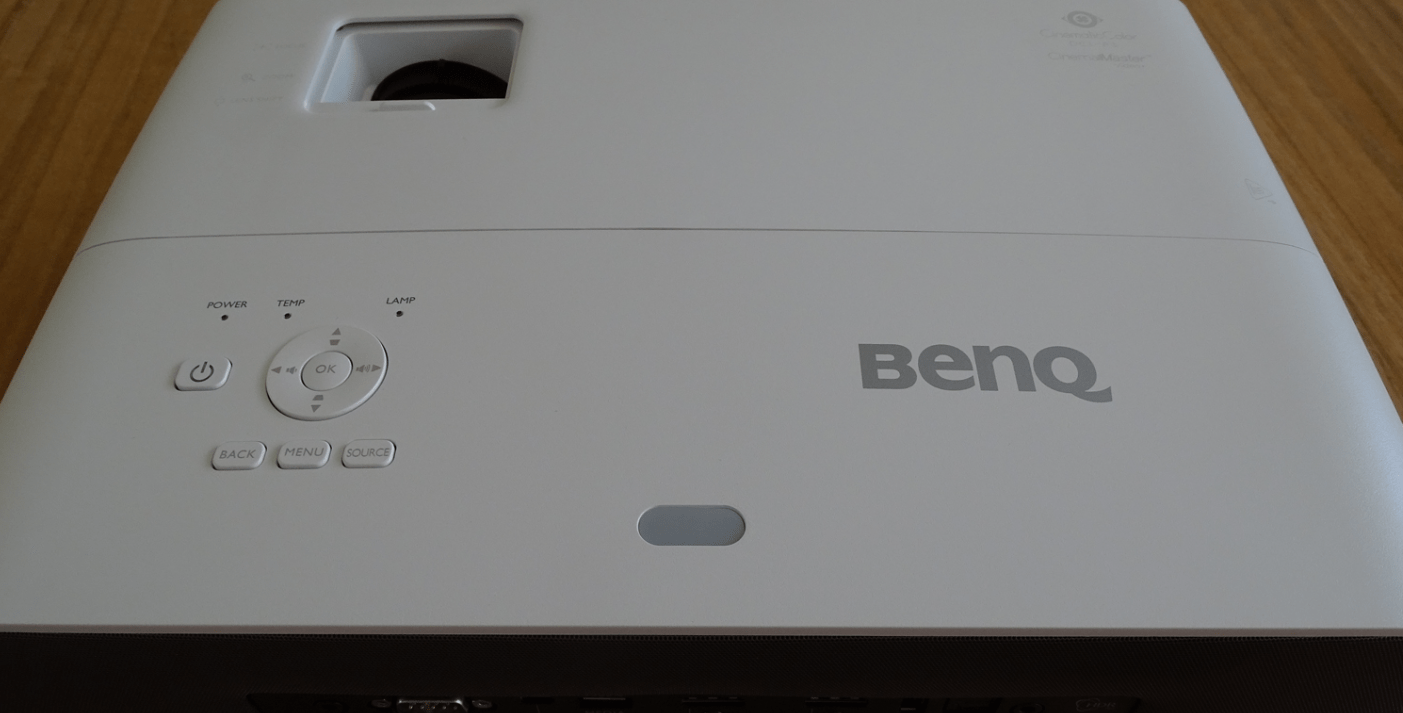At gagadget.com, your trust is our priority. We follow strict quality standards in our research, tests, and analysis of video projectors, to give you the best experience. Learn more
Benq TK850 vs Benq W2700i: Comparison
Hey everyone, Jim's here. Today, I'm comparing two popular 4K projectors from BenQ: the TK850 and the W2700i. Both offer true 4K UHD resolution, HDR support, and impressive color performance. But they also have some key differences in brightness, throw ratio, and smart features that could make one a better fit for your specific setup and preferences.
I've spent hours testing both projectors, evaluating picture quality, ease of use, and overall value. In this in-depth comparison, I'll share my hands-on experience to help you decide which one is the smarter buy for your home theater. Let's dive in!
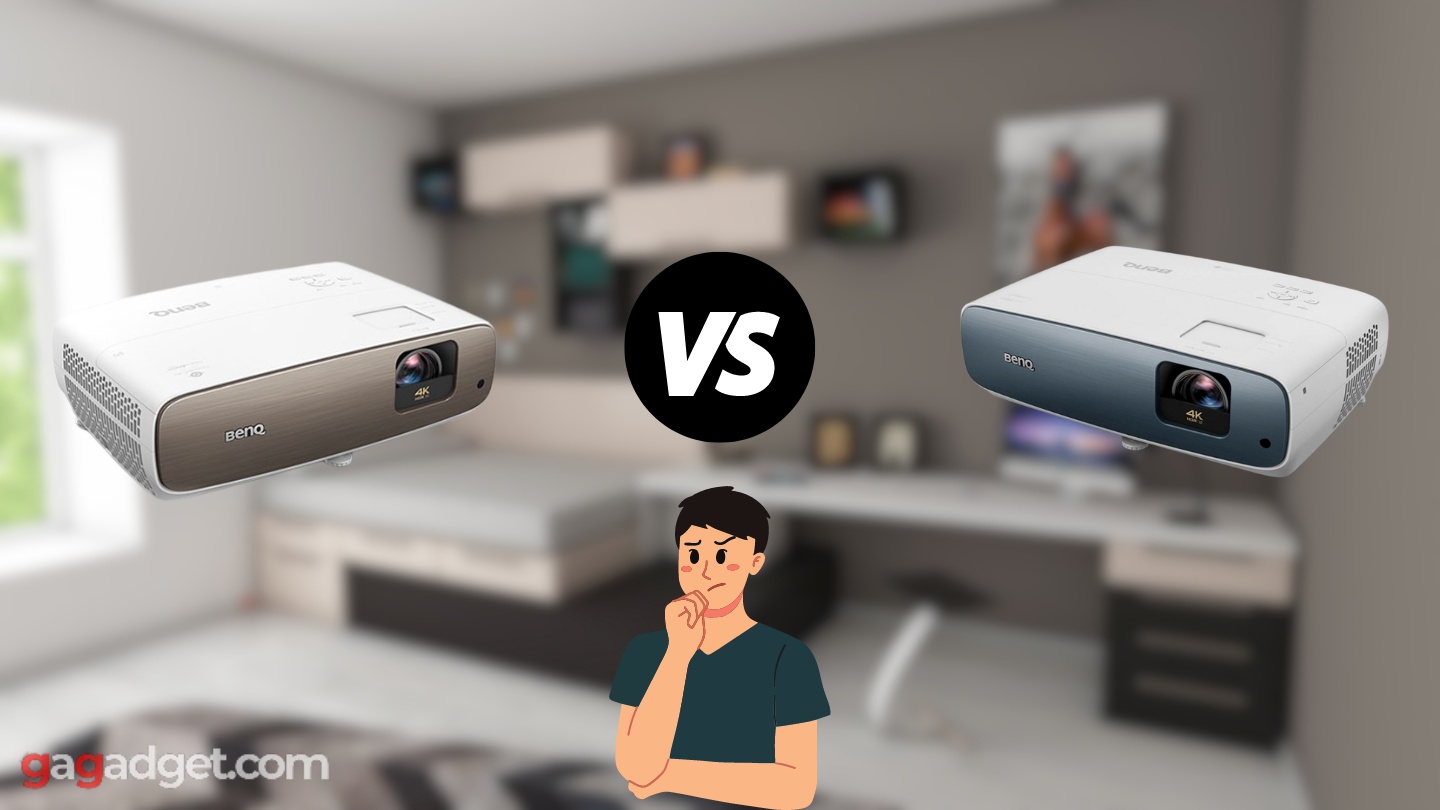
BenQ TK850 vs W2700i: At a Glance
I respect your time and aim to provide only the essential information, skipping the fluff.
Here's a brief summary: The BenQ TK850 is the brighter of the two at 3,000 ANSI lumens vs the W2700i's 2,000 lumens. It also has a slightly longer throw ratio, allowing for larger screen sizes from a given distance. The W2700i, on the other hand, includes an Android TV dongle for streaming apps and a wider DCI-P3 color gamut. Both offer 4K resolution, HDR support, and strong color accuracy.
In my opinion, you should go for the BenQ TK850 if you have a larger room, want the most impactful HDR experience, or plan to watch a lot of sports content. But if you value the convenience of built-in streaming, prioritize wider DCI-P3 coverage for movies, or have a smaller space, the BenQ W2700i is an excellent alternative.
Table of Contents
- BenQ TK850 vs W2700i: Full Comparison
- TK850 vs W2700i: Design
- BenQ TK850 or W2700i: Owner Reviews
- BenQ TK850 and W2700i Alternatives
- Which BenQ 4K Projector is Better, TK850 or W2700i?
BenQ TK850 vs W2700i: Full Comparison
| Specs | BenQ TK850 | BenQ W2700i |
| Image |
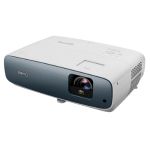
|
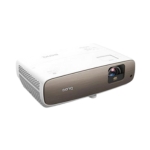
|
| Resolution | 3840 x 2160 (4K UHD) | 3840 x 2160 (4K UHD) |
| Brightness (ANSI lumens) | 3,000 | 2,000 |
| Contrast | 30,000:1 (Dynamic Iris) | 30,000:1 |
| Display technology | DLP x1 (0.47" DMD) | DLP x1 (0.47" DMD) |
| Color processing | 10-bit (1.07 billion colors) | 30-bit (1.07 billion colors) |
| Color gamut | 98% Rec.709 | 100% Rec.709, 95% DCI-P3 |
| HDR support | HDR10, HLG | HDR10, HLG |
| Light source | Lamp (245W) | Lamp |
| Light source life (Normal/Eco) | 4,000 / 15,000 hours | 4,000 / 10,000 hours |
| Throw ratio | 1.13 - 1.47:1 | 1.13 - 1.47:1 |
| Zoom / Lens shift | 1.3x manual zoom, vertical +10% | 1.3x manual zoom, vertical +10% |
| Input lag | 83ms (4K/60Hz), 83ms (1080p/60Hz) | Not specified |
| Integrated speakers | 2x 5W | 2x 5W chambered |
| Smart features | None | Android TV (via QS01 dongle), Google Assistant |
| Dimensions (W x H x D) | 15" x 5" x 10.3" | 15" x 5" x 10.4" |
| Weight | 9.26 lbs | 9.26 lbs |
| Release year | 2019 | 2021 |
Starting with image quality, both the BenQ TK850 and W2700i use the same 0.47" DLP chip to produce a sharp, pixel-dense 4K UHD picture. BenQ's optimization of the single-DMD, XPR pixel shifting is excellent, creating an image that's nearly indistinguishable from native 4K in most content. Fine details like hair, fabric texture, and distant objects are crisp and clear.
The key difference is in brightness, where the TK850's 3,000 ANSI lumens outshine the W2700i's 2,000 lumens by a significant margin. In practice, this allows the TK850 to produce a satisfyingly bright image in rooms with some ambient light, on larger screens, or with more challenging HDR content. The W2700i is best suited for moderately sized screens in darker environments.
Both projectors offer similar contrast performance with a specified 30,000:1 ratio. However, the TK850 includes a Dynamic Iris to modulate light output on a scene-by-scene or frame-by-frame basis. This can provide a more dynamic HDR experience with better preservation of highlight and shadow detail. The W2700i relies solely on its native contrast capabilities.
When it comes to color reproduction, both models fully cover the Rec.709 HD color space for accurate, lifelike hues. But the W2700i takes this further with 95% coverage of the wider DCI-P3 gamut often used in 4K HDR content. This can result in slightly more saturated, vibrant colors in movies and games mastered for that space. The TK850 is no slouch at 98% Rec.709 but doesn't extend as far into P3.
For installation flexibility, the two projectors are quite similar. They share a 1.3x manual zoom and vertical lens shift range of +10%. This is adequate for most setups but may require more precise placement compared to projectors with higher zoom or shift. The ideal screen size for a 9-10 foot distance is about 100-120 inches.
Input lag is another area where BenQ doesn't provide a specification for the W2700i. The TK850 measures around 83ms at 4K/60Hz and 1080p/60Hz, which is sufficient for casual gaming but may be too high for competitive or timing-sensitive play. If gaming is a priority, there are projectors with much lower lag in this price range.
A unique advantage of the W2700i is its included Android TV dongle. This allows you to stream content from popular apps like Netflix and YouTube without any additional devices. It also supports Google Assistant voice control and Chromecast screen mirroring. The TK850 lacks any smart features, so you'll need a separate streaming stick or box.
Finally, let's talk sports and broadcasts. The TK850 includes dedicated Football and Sports picture modes that boost brightness, color saturation, and motion handling for an enhanced viewing experience. Combined with the higher lumens, this makes it a great choice for daytime viewing of live events with friends and family. The W2700i has generic Bright and Vivid modes but nothing sports-specific.
Ultimately, the decision between the BenQ TK850 and W2700i will depend on your specific needs and viewing habits. If you have a larger room, want the flexibility to watch with some lights on, and prioritize sports or brighter HDR highlights, the TK850 is the way to go. But if you have a light-controlled theater space, value the expanded DCI-P3 color, and want the convenience of Android TV streaming, the W2700i is an excellent alternative.
TK850 vs W2700i: Design
On the design front, the BenQ TK850 and W2700i share a nearly identical white chassis with rounded edges and an offset lens. Both have a relatively compact form factor for their performance class.
BenQ TK850 Design:
BenQ W2700i Design:
The TK850 measures 15" x 5" x 10.3" (W x H x D) and weighs 9.26 lbs, while the W2700i is ever-so-slightly deeper at 15" x 5" x 10.4" with the same weight. This puts them on the larger side for home projectors but still small enough to move between rooms or mount on a ceiling.
On top of each projector, you'll find manual dials for 1.3x zoom and focus, along with basic controls for power, menu navigation, and source selection. The lens is recessed and offset to the right side. Large air vents flank the lens to dissipate heat from the lamp.
Around back, connectivity options are fairly standard. Both offer dual HDMI 2.0 ports (one with ARC on the W2700i), a USB port for powering streaming dongles, a 12V trigger for motorized screens, and 3.5mm audio in/out jacks. The TK850 adds a second USB port and an RS-232 jack for integration with automation systems.
The included remote controls are well-designed and backlit for easy button identification in the dark. The remotes are nearly identical, with the main difference being a Prime Video hotkey on the W2700i remote for quick access to the popular streaming service.
As far as noise levels, both projectors have a rated fan noise of 30dB in Normal lamp mode and 28dB in Economic mode. This is relatively quiet and shouldn't be too distracting in most setups. The W2700i does have a special "Silence" picture mode that may be preferable for those who are especially sensitive to fan noise.
Overall, the BenQ TK850 and W2700i are well-built, stylish projectors that should fit comfortably in most home theater spaces. The TK850 has a slight edge in connectivity with its second USB port and RS-232 jack, but the W2700i's integrated Android TV dongle negates the need for an external streaming device. Both have quiet fans and easy-to-use remote controls.
BenQ TK850 or W2700i: Owner Reviews
To give you a wider perspective, let's take a look at what actual buyers are saying about their experiences with the BenQ TK850 and W2700i projectors:
BenQ TK850 Reviews:
Praises: "The image quality is simply stunning, especially with 4K HDR content. Colors are rich and vibrant, and the brightness is impressive even in my living room with some ambient light."
"I'm blown away by the sharpness and detail. 4K material looks incredible, and even 1080p content is noticeably improved by the pixel shifting. The projector also does a great job upscaling lower-res sources."
***
Drawbacks: "The black levels and contrast are good for the price but not quite as inky as some more expensive projectors. You can notice some grayish blacks in very dark scenes, especially when watching in a fully darkened room."
"The built-in speakers are pretty weak and tinny. They're fine for casual viewing but for a true home theater experience, you'll definitely want to use external speakers or a soundbar."
BenQ W2700i Reviews:
Praises: "The color reproduction on this projector is simply amazing. The wider DCI-P3 gamut really makes movies pop, with lush greens, vivid reds, and deep blues. It's a noticeable step up from standard Rec.709."
"The Android TV integration is fantastic. The interface is snappy and intuitive, and it's so convenient to have all my streaming apps right on the projector. The Google Assistant is also super handy for quickly finding content."
***
Drawbacks: "The brightness is sufficient for a dark room but struggles a bit in ambient light, especially on larger screens. HDR content can look a little dim compared to SDR."
"The projector runs quite hot and the fan noise is noticeable in the Normal lamp mode. It's much better in Eco mode but you do sacrifice some brightness. Just something to keep in mind for smaller rooms."
Overall, owners of both projectors are very satisfied with their purchases, frequently praising the sharp 4K resolution, impressive HDR performance, and accurate colors. TK850 users especially appreciate the high brightness for living room use and the projector's suitability for sports viewing. W2700i buyers love the expanded DCI-P3 color gamut for movies and the convenience of the Android TV dongle.
On the downside, some TK850 owners note the mediocre black levels and lackluster onboard audio, while a few W2700i users wish for higher brightness and quieter fan operation in Normal mode. But overall, these complaints are relatively minor and both models deliver an excellent big-screen experience for the price.
BenQ TK850 and W2700i Alternatives
If neither the BenQ TK850 nor W2700i seems like the perfect fit, here are a couple other highly-rated 4K projectors to consider in the same general price range:
- Epson Home Cinema 4010: A 4K PRO-UHD projector with 2,400 lumens, motorized lens, and excellent out-of-box color accuracy. Great for dedicated home theaters.
- Optoma UHD50X: A bright DLP projector with 3,400 lumens, low input lag for gaming, and flexible installation thanks to a 1.3x zoom and vertical lens shift.
The Epson 4010 is a strong alternative for those who want the easier placement of a motorized 2.1x zoom and lens shift. It also boasts very accurate colors out of the box, wide coverage of DCI-P3, and good contrast thanks to Epson's 3LCD technology. Just keep in mind it's not a true native 4K projector like the BenQs.
For those who prioritize brightness and gaming responsiveness, the Optoma UHD50X is hard to beat. Its 3,400 lumens and 240Hz refresh rate with 16ms input lag make it a favorite among gamers, and the 1.3x zoom and vertical lens shift give it solid placement flexibility. Colors and black levels aren't quite as good as the BenQ models though.
Which BenQ 4K Projector is Better, TK850 or W2700i?
After extensively testing and comparing the BenQ TK850 vs BenQ W2700i, it's clear that both are exceptional 4K projectors that deliver where it counts - sharp resolution, vibrant colors, good contrast, and reliable performance. But their differences in brightness, color gamut, and smart features make each one slightly better suited for different users and environments.
For most people, I recommend the BenQ TK850. Its significantly higher 3,000-lumen brightness makes it more versatile for use in living rooms and mixed lighting conditions. The Dynamic Iris also gives it an edge in rendering better HDR highlights and shadow detail. And its dedicated Football and Sports modes are a godsend for daytime viewing of the big game with friends.
However, the BenQ W2700i is a compelling alternative for certain setups. If you have a light-controlled dedicated theater room, its 2,000 lumens will be plenty and you'll appreciate the wider DCI-P3 color gamut for a more impactful, cinematic image. The included Android TV dongle is also super convenient for streaming fans who want an all-in-one solution without extra boxes or wires.
As far as picture quality, the two projectors are virtually neck-and-neck, with excellent sharpness, clarity, and color accuracy. The TK850's higher brightness gives it an overall more dynamic and impactful image, especially with HDR content, but the W2700i's expanded color and lower fan noise may be preferable for critical movie viewing.
Ultimately, you can't go wrong with either BenQ projector for a top-notch 4K viewing experience. Sports fans, gamers, and living room users will love the TK850's lumens and punch, while movie buffs and those with dedicated theaters should strongly consider the W2700i for its DCI-P3 color, integrated streaming, and Silence mode.
I hope this in-depth comparison has helped you decide which BenQ 4K projector best fits your needs, preferences, and space. Let me know if you have any other questions. I'm always here to help!
Go Deeper:

